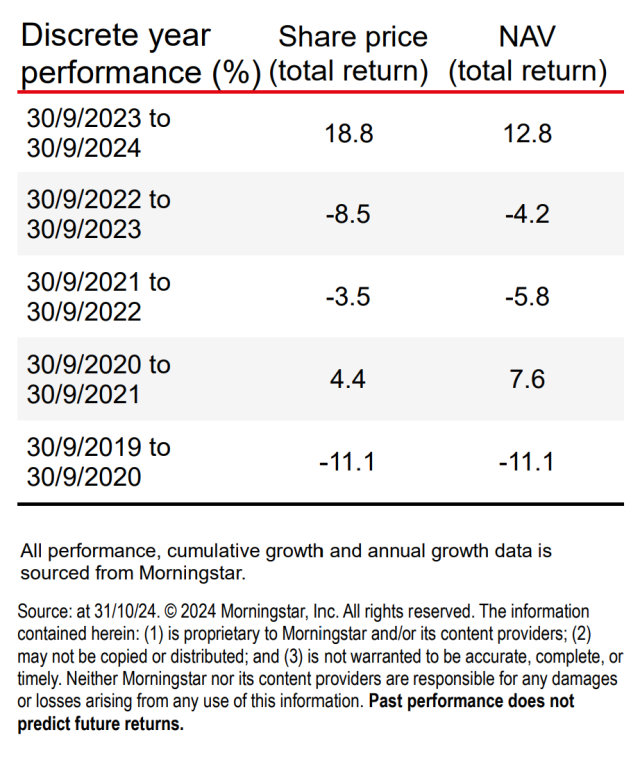How did Asian markets behave in 2024?
Asian markets overall were up over the year. Particularly strong performance was seen in Taiwan, largely from technology names, which were boosted by AI sentiment.
China had a strong rebound in September driven by a series of stimulus measures by the government. These are ongoing and we would expect that there is more potential to support the market in the face of higher proposed tariffs from the US. Performance since the US election has been mixed, as the prospect of raised tariffs looms over exporting nations such as Korea and China.
Korea has been the weakest performer in 2024. Early in the year, the Financial Services Commission (FSC) and Korean Exchange (KRX) announced their “value up” programme, designed to make its market more shareholder-friendly. This in turn was expected to raise valuations.
However, after a strong start the programme lost some steam later in the year. Korean retail investors have deployed capital to markets outside of Korea, with large positions in growth US equities. Samsung, now 16% of the Korea Kospi index (down from 22% in January), has also been left behind in the AI race. Political instability in the final quarter added to the market’s falls over the year.
Which areas contributed to Henderson Far East Income Limited’s performance – and which didn’t?
Our increased positioning in Taiwan and India worked well – giving us exposure to technology (AI in particular) in Taiwan and infrastructure via the utility names in India.
Reflecting this, our shift towards the structural growth themes of technology, infrastructure, domestic consumer champions, financial inclusion and corporate reform have supported performance. We expect these themes to support growth for our portfolio in the years to come.
Our exposure earlier in the year to cyclical and consumer-focused names in China were detractors. Hence the significant repositioning of the portfolio here towards two areas: first, high-yield cheaply valued SOEs with improving dividend outlook and, second, domestically-focused high growth internet companies trading at depressed levels. Both areas have responded well to the recent stimulus.
What was the dividend performance of the region in 2024?
Dividend growth has been strong in the year, with regulators positively impacting higher dividends in China, Korea and India. In China there is the beginning of SOE reform to address low valuations, with an emphasis on dividends and share buybacks. In Korea the Value-Up programme is leading companies to disclose long-term targets for returns and dividends. And in India it has become more efficient for companies to focus on dividends versus share buybacks due to some regulatory changes.
Cash on balance sheets is at a record high, but payout ratios are still low. This indicates to us that there is still plenty of room for upside for dividends.
What are the biggest challenges facing Asia in 2025?
The new US administration is likely to be negative for China and this will impact exports from the region. This could drive a refocus on intra-Asia trade and domestic consumption, which is positive for our region over the long-term but can create some short-term disruption.
The weaker economic performance of China has been weighing down sentiment in the region more generally, despite the success of many other markets and sectors. As such, any deterioration in the Chinese context would be negative for investor flows to our region.
However, inflation has been structurally lower in the region. There is sufficient headroom to cut rates and provide monetary support for many of our markets.
Which countries are capturing your attention for the New Year?
India and Indonesia still stand out in terms of macro strength, new mandates for the respective governments and expected strong growth. All three drive compelling opportunities for capital performance.
Singapore and Australia remain attractive for high sustainable yield. They are resilient economies where dividends are still a key focus. For example, the Singapore banks recently announced more positive news on dividends and share buybacks despite already high yields.
ASEAN and India are likely to be more insulated in any trade war, given that domestic consumption is a relatively greater driver of growth. We have repositioned towards these markets over the last year and remain positive.

Glossary
Balance sheet
A financial statement that summarises a company’s assets, liabilities and shareholders’ equity at a particular point in time. Each segment gives investors an idea as to what the company owns and owes, as well as the amount invested by shareholders. It is called a balance sheet because of the accounting equation: assets = liabilities + shareholders’ equity.
Cyclical stocks
Companies that sell discretionary consumer items (such as cars), or industries highly sensitive to changes in the economy (eg. mining).
Dividend
A variable discretionary payment made by a company to its shareholders.
Inflation
The rate at which the prices of goods and services are rising in an economy. The Consumer Price Index (CPI) and Retail Price Index (RPI) are two common measures. The opposite of deflation.
Macroeconomics/Microeconomics
Macroeconomics is the branch of economics that considers large-scale factors related to the economy, such as inflation, unemployment or productivity. Microeconomics is the study of economics at a much smaller scale, in terms of the behaviour of individuals or companies.
Monetary policy
The policies of a central bank, aimed at influencing the level of inflation and growth in an economy. Monetary policy tools include setting interest rates and controlling the supply of money. Monetary stimulus refers to a central bank increasing the supply of money and lowering borrowing costs. Monetary tightening refers to central bank activity aimed at curbing inflation and slowing down growth in the economy by raising interest rates and reducing the supply of money. See also fiscal policy.
Portfolio
A grouping of financial assets such as equities, bonds, commodities, properties or cash. Also often called a ‘fund’.
Share buybacks
Where a company buys back their own shares from the market, thereby reducing the number of shares in circulation, with a consequent increase in the value of each remaining share. It increases the stake that existing shareholders have in the company, including the amount due from any future dividend payments. It typically signals the company’s optimism about the future and a possible undervaluation of the company’s equity.
Structural factor/change
An economic condition arising when an industry or market changes how it functions or operates. This could be attributed to new economic development, shifts in the pools of capital and labour, demand and supply of natural resources, political and regulatory change, taxation, etc.
Valuation metrics
Metrics used to gauge a company’s performance, financial health and expectations for future earnings, eg. price to earnings (P/E) ratio and return on equity (ROE).
Yield
The level of income on a security over a set period, typically expressed as a percentage rate. For equities, a common measure is the dividend yield, which divides recent dividend payments for each share by the share price. For a bond, this is calculated as the coupon payment divided by the current bond price. For investment trusts: Calculated by dividing the current financial year’s dividends per share (this will include prospective dividends) by the current price per share, then multiplying by 100 to arrive at a percentage figure.
Disclaimer
References made to individual securities do not constitute a recommendation to buy, sell or hold any security, investment strategy or market sector, and should not be assumed to be profitable. Janus Henderson Investors, its affiliated advisor, or its employees, may have a position in the securities mentioned.
There is no guarantee that past trends will continue, or forecasts will be realised.
Past performance does not predict future returns.
Not for onward distribution. Before investing in an investment trust referred to in this document, you should satisfy yourself as to its suitability and the risks involved, you may wish to consult a financial adviser. This is a marketing communication. Please refer to the AIFMD Disclosure document and Annual Report of the AIF before making any final investment decisions. Past performance does not predict future returns. The value of an investment and the income from it can fall as well as rise and you may not get back the amount originally invested. Tax assumptions and reliefs depend upon an investor’s particular circumstances and may change if those circumstances or the law change. Nothing in this document is intended to or should be construed as advice. This document is not a recommendation to sell or purchase any investment. It does not form part of any contract for the sale or purchase of any investment. We may record telephone calls for our mutual protection, to improve customer service and for regulatory record keeping purposes.
Issued in the UK by Janus Henderson Investors. Janus Henderson Investors is the name under which investment products and services are provided by Janus Henderson Investors International Limited (reg no. 3594615), Janus Henderson Investors UK Limited (reg. no. 906355), Janus Henderson Fund Management UK Limited (reg. no. 2678531), (each registered in England and Wales at 201 Bishopsgate, London EC2M 3AE and regulated by the Financial Conduct Authority), Tabula Investment Management Limited (reg. no. 11286661 at 10 Norwich Street, London, United Kingdom, EC4A 1BD and regulated by the Financial Conduct Authority) and Janus Henderson Investors Europe S.A. (reg no. B22848 at 78, Avenue de la Liberté, L-1930 Luxembourg, Luxembourg and regulated by the Commission de Surveillance du Secteur Financier).
Janus Henderson is a trademark of Janus Henderson Group plc or one of its subsidiaries. © Janus Henderson Group plc

